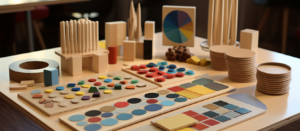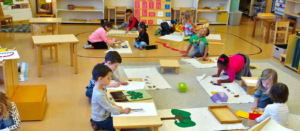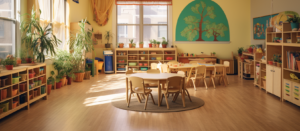Have you ever wondered why Montessori toys often have a higher price tag than conventional toys? While the initial cost might seem steep, understanding the reasons behind the pricing of Montessori toys can offer a new perspective on their value and importance in a child’s development.
First of all, what are Montessori toys?
Montessori Materials are educational toys that are designed based on the principles developed by Dr. Maria Montessori, an Italian physician and educator. These toys are carefully crafted to foster independence, creativity, and problem-solving skills in children. They are often made from natural materials such as wood and are free from bells, whistles, and unnecessary electronic components.
Let’s explore the factors contributing to the higher cost of Montessori toys and consider whether this investment aligns with their benefits.

Quality Materials and Craftsmanship
One of the primary reasons Montessori toys are more expensive is the quality of materials and craftsmanship involved in their production.
- Natural, Durable Materials: Montessori toys are typically made from high-quality raw materials like wood, metal, or cotton, which are more costly than plastic.
- Craftsmanship and Design: These toys are often carefully crafted to ensure they are safe, durable, and aesthetically pleasing, involving more intricate manufacturing processes.
Educational Value and Longevity
Montessori toys are designed for play and educational purposes, adding value and cost.
- Developmentally Appropriate Design: Each toy is thoughtfully designed to support specific aspects of a child’s development, from fine motor skills to cognitive growth.
- Longevity and Reusability: These toys often have a longer lifespan and can be used for many years, even passed down through siblings, offering long-term value.
Sustainable and Ethical Production
The production process of Montessori toys often prioritizes sustainability and ethical practices, which can increase the cost.
- Eco-Friendly Production: Many Montessori toys focus on environmental sustainability, using renewable resources and non-toxic finishes.
- Fair Labor Practices: Ethical manufacturing, which includes fair wages and safe working conditions, can also contribute to a higher retail price.
Limited Mass Production
Unlike many conventional toys, Montessori materials are often not mass-produced, which can increase the cost per unit.
- Small-Scale Manufacturing: Many Montessori toys are made by smaller companies or artisans, which means they don’t benefit from the economies of scale that more prominent toy manufacturers do.
Research and Development Costs
Developing Montessori toys involves extensive research to ensure they meet educational standards and are developmentally appropriate.
- Involvement of Educational Experts: The design and production of Montessori toys often involve collaboration with child development experts, adding to the development cost.

Are Montessori toys worth the investment?
Absolutely! While Montessori toys may come with a higher price tag, they offer numerous benefits that make them worth the investment. These toys are designed to be open-ended, allowing children to explore and engage with them in multiple ways. They foster creativity, problem-solving skills, and critical thinking. Montessori toys also encourage independence and self-directed learning, empowering children to take control of their education.
Furthermore, Montessori toys are built to last. Their high-quality materials and craftsmanship ensure that they can withstand the wear and tear of everyday play. Investing in toys that can be passed down to younger siblings or even future generations is not only environmentally friendly but also economically sound in the long run.
Will my child outgrow Montessori toys quickly?
One concern parents often have is whether their child will outgrow Montessori toys quickly, making the investment seem wasteful. However, Montessori toys are designed to grow with your child. They are intentionally created to challenge children at different stages of development, providing ongoing engagement and learning opportunities. From stacking toys for infants to more complex puzzles and building sets for older children, Montessori toys offer a wide range of options that cater to various ages and abilities.

Conclusion
In conclusion, while Montessori toys may seem expensive upfront, their cost reflects the quality of materials, craftsmanship, educational value, ethical production, and careful research into their creation. These toys are not just playthings but tools that contribute to a child’s development and learning, offering enduring value over time. When considering the purchase of Montessori toys, weighing these factors and their long-term benefits to a child’s growth and development is essential.






